Exhibitions Help to Modernise Museums
Written by Tatev Saroyan, Head of Public Relations, Matenadaran (Armenia, ITP Fellow 2022)
My name is Tatev Saroyan, I work at Matenadaran, Mesrop Mashtots Research Institute of Ancient Manuscripts as the Head of the Department of Public Relations. Matenadaran is an important center for the preservation and study of manuscripts and old printed books.
In 2022 I became a British Museum ITP Programme Fellow.

Having acquired new knowledge, I returned to Armenia and began to apply my experience at the museum of Matenadaran. A significant example is the last exhibition that opened this year on May 18.
This year, within the framework of “International Museum Day and Museum Night,” Matenadaran held a new exhibition entitled “1957 – A Key to History.” It presents the history of Matenadaran, the institute’s academic achievements, donations, publications, and cooperation since 1959.
The collection of archival material for the exhibition began in 2019, when the Public Relations Department was opened in Matenadaran, and I was appointed the Head of this Department. During my work, from time to time there was a need for archival photos and videos, in order to obtain information on the activities of our institute’s researchers and distinguished visitors. In the meantime, the archive of Matenadaran was supplemented with personal photos of long-time employees. We also found original photos related to the history of Matenadaran kept in the National Archives of Armenia and several house-museums of Armenian intellectuals.
Together with the administration of Matenadaran, we studied the material collected from 2019 to 2022. As a result, the idea of an exhibition dedicated to the history of the research institute was approved by the Acting Director Karen Matevosyan.
Due to the great scope of the preparatory work, not only the members of the Museum Department but also employees of the Departments of Manuscript Studies, Restoration, Archive, Public and International Relation and volunteers from different educational institutions of Armenia were involved. It was for the first time that such a large team organized an exhibition in Matenadaran.
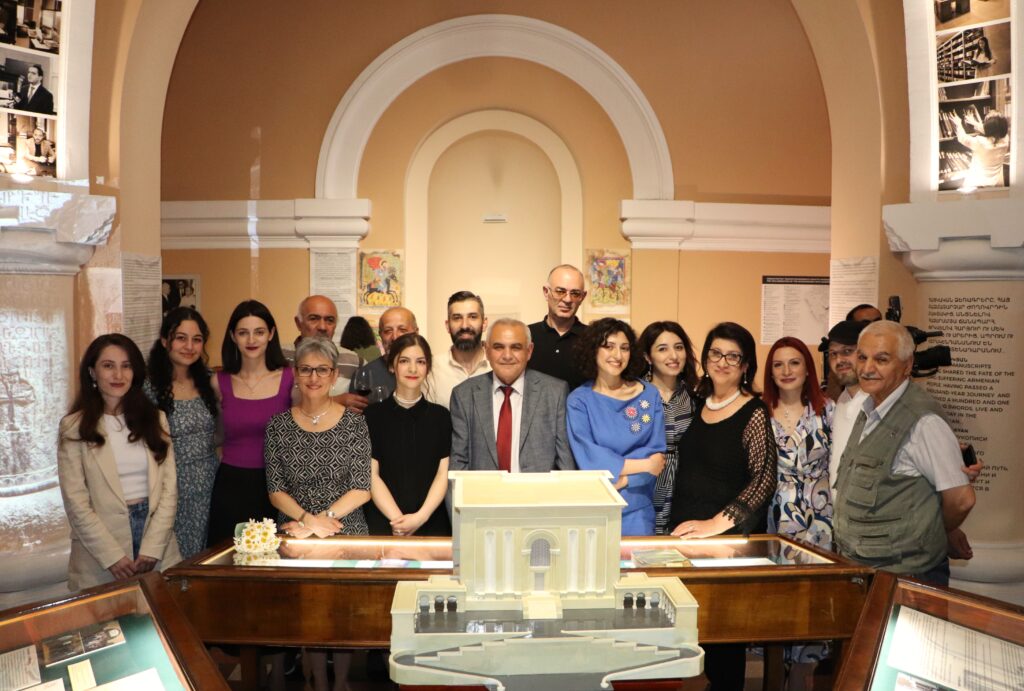
Since its establishment, Matenadaran has always been a popular place for visitors, but we realized that there was a need for innovative approaches and solutions. The concept of this exhibition is a combination of old and new ideas. Matenadaran is presented not only as a repository of manuscripts and a significant center of academic thought but also as an architectural monument that occupies its unique place in the Yerevan panorama. This building is considered as the visiting card of Armenia.
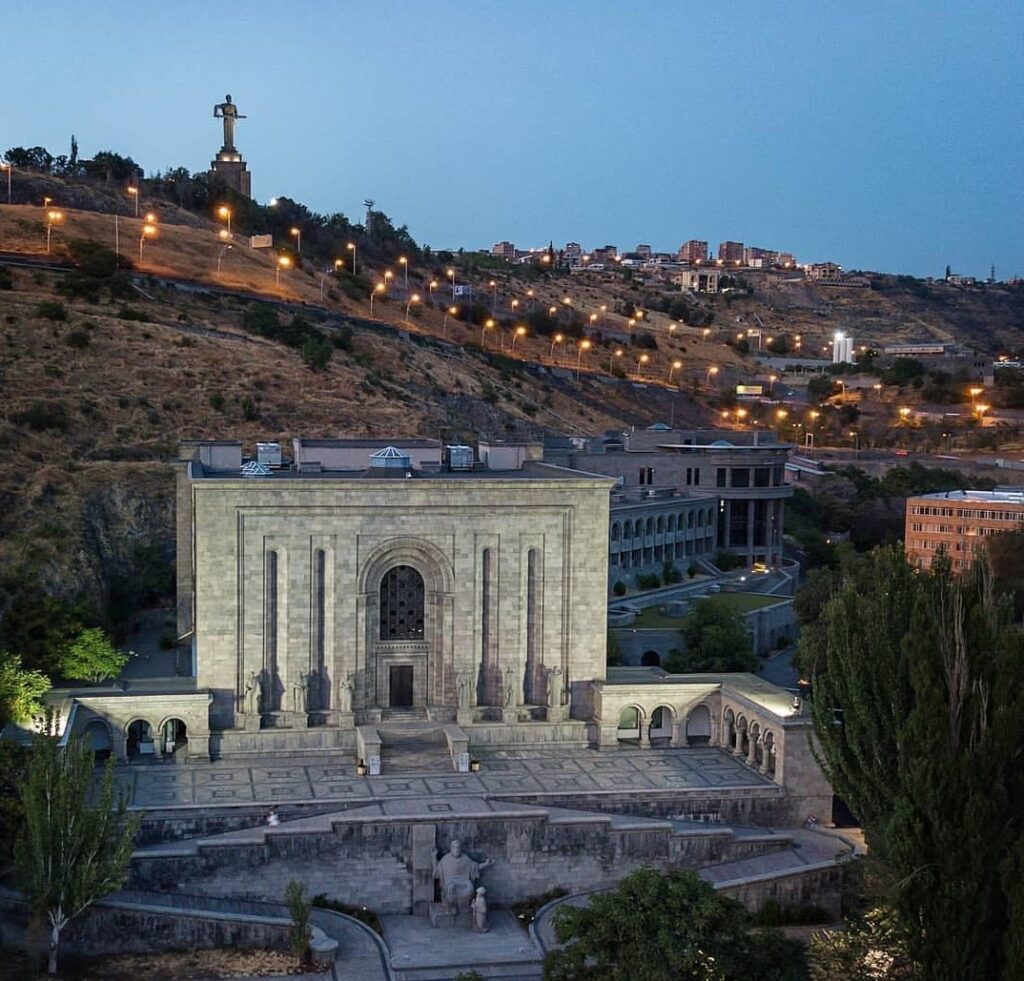
The exhibition is a combination of old furniture and accessories of Matenadaran, photographs, drawings, manuscripts, sculptures, archival documents, souvenirs, donations, books and videos, in which the traditional and innovative are interlinked.
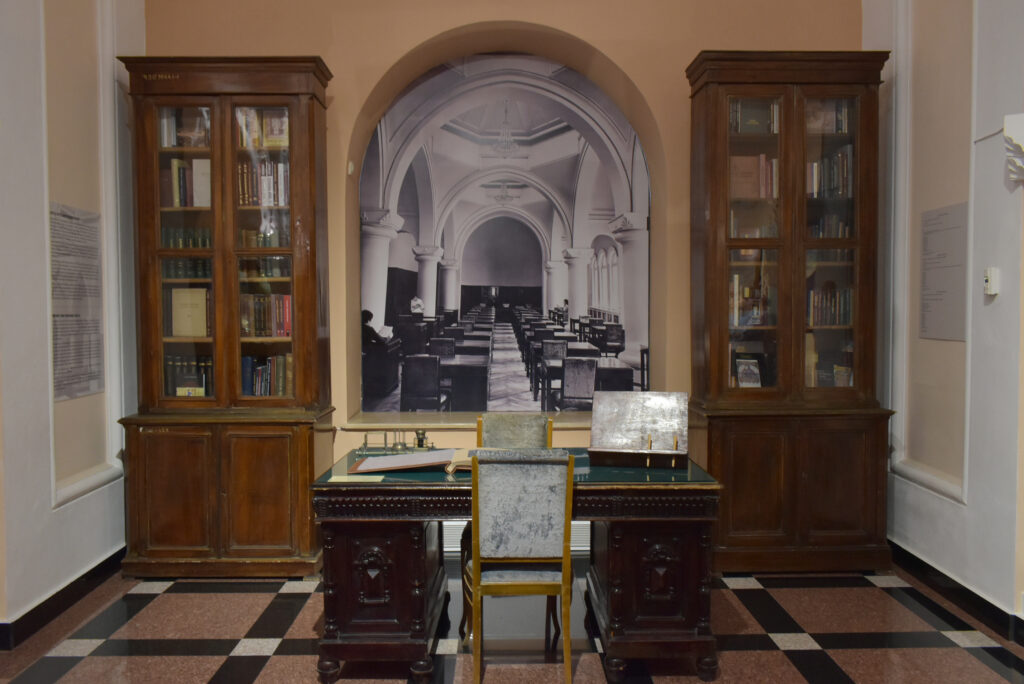
The old furniture and large-scale photos placed on the ceiling arches convey the warm historical atmosphere of Matenadaran.
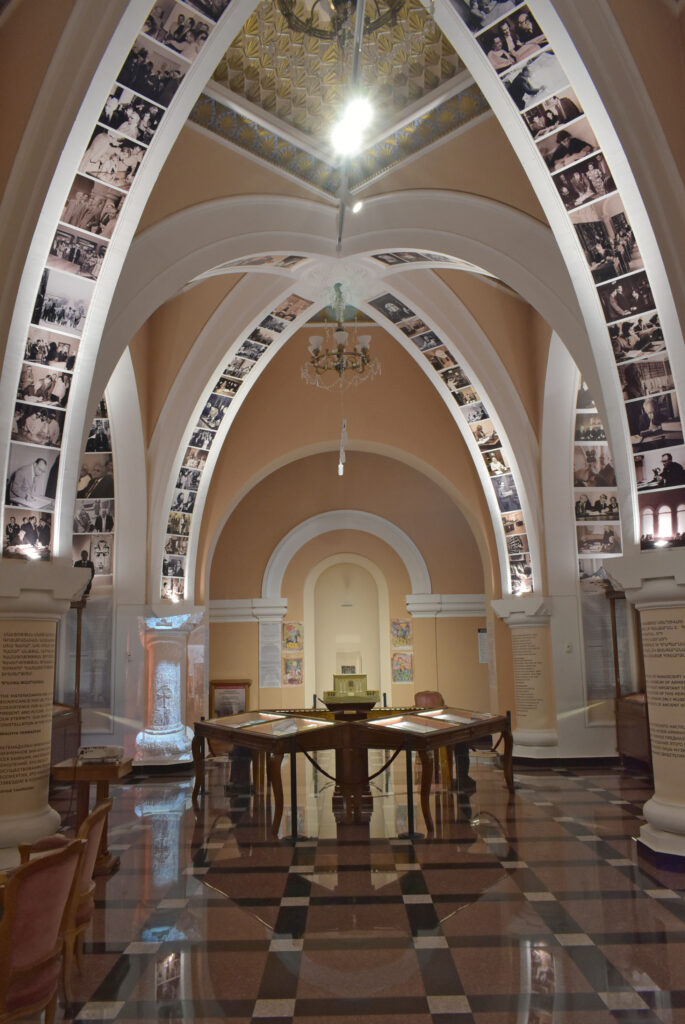
The exhibition has several thematic sections, which are located according to the structure of the museum. In the first hall, the idea of a manuscript repository is highlighted. In the second, the architecture of the old and new buildings is emphasized. The achievements of Matenadaran in various fields of activity are also collected here. The last section is dedicated to the benefactors and donators of Matenadaran as well as its relations with the world.
Based on the large amount of material, I proposed the idea of a changing exposition like that of the Albukhary Foundation Gallery of the Islamic world at the British Museum, with which I got acquainted during my visit there.

The archival materials will be replaced in line with the concept of the exhibition. Also, the displayed manuscripts will be changed regularly. We will try to present those manuscripts that were not exhibited or rarely exhibited previously.
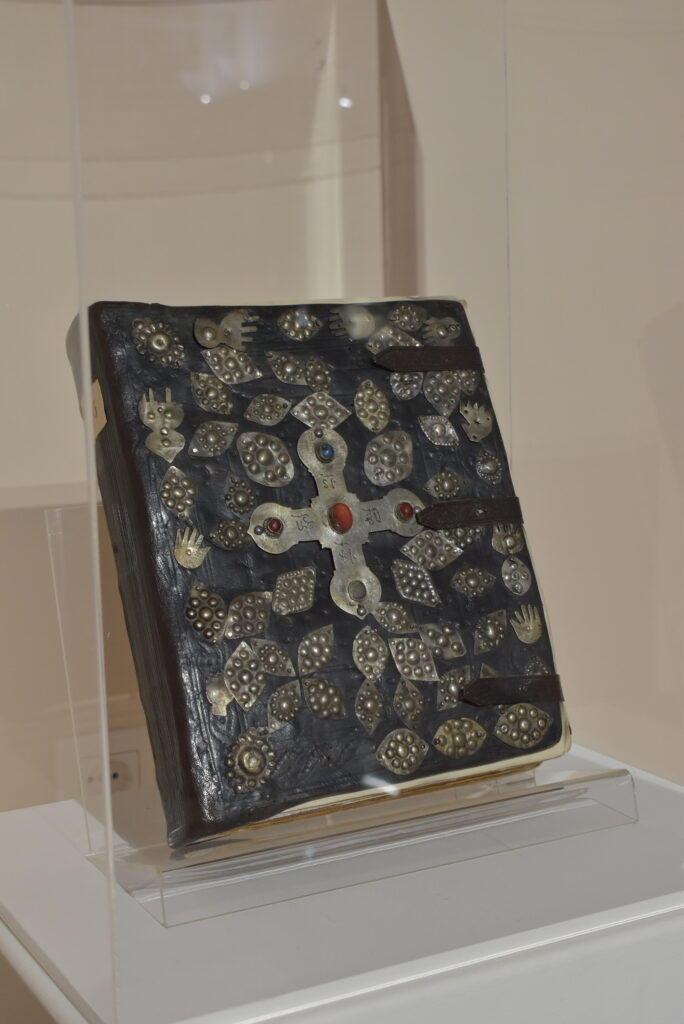
The exhibition includes interactive elements too: installations, films and hands-on activities. For example, visitors have a unique opportunity to look through the photo album where many photos of old and new employees of Matenadaran and of official guests from different countries are collected. My idea was to allow the visitors remember and value a printed photo album, because today people do not print photos but remain in phones and computers. The tradition of making a family album seems to have disappeared. I proposed the idea of the album because Matenadaran is considered a great home for research and a family where both scholars and ordinary visitors, Armenian or foreign, have their place. According to this principle, we printed the most remarkable entries in the book of impressions written both by distinguished guests and by curious and grateful ordinary visitors.

Also, we prepared a large package of souvenirs for the exhibition.
The Acting Director of Matenadaran, Karen Matevosyan, considers the exhibition unique and original. According to him, the exhibition made it possible to move to the 60s of the last century, when Matenadaran was founded. From there, we begin our journey to the present day, seeing the various stages and results of the institute’s activity. The exhibition vividly presents the work carried out in Matenadaran during decades, emphasizing that our institute is one of the leading centers for Armenian studies and will maintain that high status in years to come.
